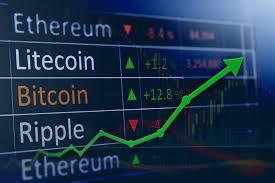- Ethereum-killers with strong functionality and network capacity are gaining massive traction.
- Metaverse tokens are getting solid traction amid the rising market demand.
2021 has been the year of several formidable cryptocurrency projects coming up. Although Bitcoin (BTC) and Ethereum (ETH) continue with the mega bull runs, several altcoin projects are gaining massive traction.
Ethereum competitors often dubbed as Ethereum-killers have been the theme of the year with the rising demand for decentralized finance (DeFi). Besides, the craze surrounding non-fungible tokens (NFTs) has also helped Ethereum alternatives to flourish in the market.
Some of the rapidly emerging Ethereum alternatives are players like Avalanche (AVAX), Solana (SOL), Polygon (MATIC), etc. As Ethereum struggles with scalability and high transaction costs, these Ethereum-killers are getting faster market traction and adoption.
Earlier this week, Solana (SOL) touched its all-time high of $260 becoming the fourth largest cryptocurrency by toppling giants like Tether (USDT) and Cardano (ADA). Many analysts think that the party for Ethereum alternatives is just getting started and a number of rivals are preparing for even bigger gains. These Ethereum killers are witnessing a rapidly rising base of users and investors. Rosh Singh, founder of crypto trading start-up Quadency said:
Ethereum needs to do something quickly as others with faster and more novel consensus [transaction confirmation]mechanisms are gathering lots of funding from VCs.
Singh further added that everything depends on the launch timeline of Ethereum 2.0. If the Ethereum 2.0 upgrades arrive yearly 2022, it should retain its competitive edge in the market.
Related: Solana gains 33% to shoot past Cardano and Tether – but a 12M SOL cover-up haunts the project
Betting on Ethereum-killers like Avalanche, Fantom, and Terra
Singh is betting on Ethereum-killers like Avalanche, Fantom, and Terra. These networks have been introducing innovative ways to solve problems associated with Proof-of-Stake (PoS) consensus as well as stablecoins.
The Avalanche blockchain implements an innovative technology dubbed directed acyclic graphs (DAG). Thus, to complete a transaction on Avalanche, 80 percent of DAG’s nodes must validate it. This eliminates the probability that one dominant node, as in the case of PoS, will control the entire process.
Similarly, Fantom employs a similar mechanism dubbed Lachesis. Analysts like Singh noted that Fantom’s (FTM) smaller circulation supply can help fuel the crypto price. Fantom specifically caters to decentralized applications (DApps) with transaction speeds of under 2 seconds. The FTM price is already up by nearly 15000 percent year-to-date. But Singh is expecting additional 4x-5x gains for Fantom in the near future.
Finally, Singh speaks of Terra (LUNA) which has had a solid run-up recently. LUNA is currently the 12th largest cryptocurrency trading at a price of $53.12 with a market cap of $21.2 billion.
Stablecoins for a while have been struggling to prove their 1:1 reserves against fresh issuance. Terra (LUNA) does this job effectively. Singh explains:
We have Tether, USDT, Dai and many other stablecoins out there but most of them still rely on some form of formal funds’ verification. Terra (LUNA coin) is solving this by using other verification methods [through a proprietary algorithm that matches supply and demand]than relying on third parties.
Betting on the Metaverse tokens
Facebook’s rebranding to Meta and its entry into metaverse has got everyone talking around this theme in the crypto space. Matthew Siegel, who heads cryptocurrency research at VanEck, remains particularly bullish about Metaverse tokens.
Over the last two weeks, Metaverse tokens have been particularly in the news. Siegel notes:
The metaverse [asset class]has doubled in the past month and the pure play coins such as The Sandbox, Axie Infinity, Enjin and Flow are massively outperforming traditional gaming players offering metaverse experiences such as Roblox, Electronic Arts or Activision.
The Sandbox platform allows users to sell metaverse properties and islands via NFTs. Currently, the platform hosts more than 12,000 unique virtual landowners. The SAND token price is up 1700% over the last year.





